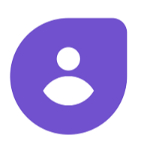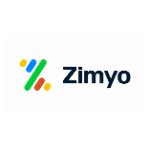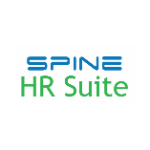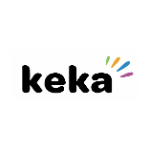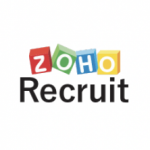
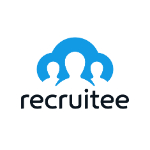
TechnologyCounter provides genuine, unbiased real user reviews to help buyers make informed decisions. We may earn a referral fee when you purchase through our links, at no extra cost to you.
List of 15 Best Applicant Tracking System
Showing 1 - 15 of 259 products
Zoho Recruit
Talent Acquisition System built to provide diverse, end-to-end hiring solutions.
Zoho Recruits talent acquisition and applicant tracking system designed for modern workforce that helps you hire more qualified candidates faster...Read Zoho Recruit Reviews

Recruitee
Recruitee is a collaborative hiring software built
Recruitee. A game-changing recruitment software that streamlines your hiring process from start to finish. With user-friendly features and customizable workflows, Recruitee helps you attract, assess, and hire top talent effortlessly. Say goodbye to t...Read Recruitee Reviews
IBM Kenexa is a human resources software developed by the renowned company IBM. With its advanced features, this software is designed to streamline hiring, onboarding, and talent management processes for businesses of all sizes. It is a solution that...Read IBM Kenexa Reviews
Naukri RMS is a recruitment management system designed to streamline and simplify your hiring process. With its user-friendly interface features, Naukri RMS empowers recruiters to efficiently manage job postings, track applicants, and make informed h...Read Naukri RMS Reviews
Google Hire is a hiring software that streamlines the entire recruitment process. From job postings and candidate evaluations to scheduling interviews and tracking progress, Google Hire simplifies it all with its user-friendly interface features, mak...Read Google Hire Reviews
GoHire ATS is a is a applicant tracking system designed to simplify your hiring process. It offers an all-in-one solution for managing candidates, scheduling interviews, and collaborating with your team. With GoHire ATS, you can streamline your hirin...Read GoHire ATS Reviews
Sage HR, a powerful is a HR management software that simplifies and streamlines all aspects of the human resources process. With its user-friendly interface features, Sage HR revolutionizes the way companies handle employee data, payroll, performance...Read Sage HR Reviews
Built to hire at scale. Configurable to suit any industry. Empowering Recruiters
Manage the end-to-end recruitment process from Requisition Creation to Onboarding on a single platform with TalentRecruit for Enterprise. GDPR Compliant & Configurable...Read TalentRecruit Reviews
Workable is a top-rated online Recruitment and Applicant Tracking software for the modern world. It is a dependable and user-friendly platform that allows organizations to efficiently hire new employees. With the option to post job openings, review...Read Workable Reviews
CEIPAL TalentHire is an AI-driven, completely coordinated ATS which helps staffing and enlisting firms in computerizing their work processes and empowers them to rapidly distinguish opportunities, speedily source and screen candidates, at that point...Read CEIPAL TalentHire Reviews
A time management software, Freshteam, was created to assist recruiters in their tasks beyond finding exceptional candidates. By automating tasks such as interview scheduling and status updates, recruiters are able to direct their attention towards...Read Freshteam Reviews
Trusted by 2500+ customers, Zimyo is a unified HR and payroll software that helps automate tedious HR processes, eliminate payroll errors, and foster positive employee experiences. It offers a comprehensive suite of 50+ modules, including a Core HR,...Read Zimyo Reviews
iSmartRecruit is a customizable Applicant Tracking System built to help recruiters, staffing agencies, and HR ease their day-to-day hiring process...Read iSmartRecruit Reviews
Spine HR Suite Seamlessly Integrates all the aspects of Organizational & Human Capital Development. It improves the performance and accountability of employees by providing a matrix of the intelligent process along with a structured workflow...Read Spine HR Suite Reviews
Keka is a Modern HR and Payroll software for small and medium sized businesses that manage employee engagement, it has time tracking, attendance management, and leave management system...Read Keka HR Reviews
What Is Applicant Tracking System Software?
Applicant tracking system (ATS) software is like your personal assistant for hiring, organizing, and managing job applications efficiently. It helps employers sift through resumes, schedule interviews, and track candidates, making the hiring process smoother. For job seekers, it offers insights into the hiring process and ensures their applications are managed effectively. In short, ATS software is a game-changer for both employers and job seekers, streamlining recruitment processes and saving time.
Why Do You Need the Best ATS Software?
An ATS software is an essential tool for modern organizations looking to streamline their recruitment process.
The following are some of the reasons why you need the best ATS software:
-
Improved efficiency: An applicant tracking software automates many manual tasks, such as resume screening and candidate tracking, which saves time and increases efficiency.
-
Better candidate experience: An ATS software provides a user-friendly interface for candidates to apply and track their status, which improves the candidate experience.
-
Better data management: ATS software allows you to store and manage candidate information in one central location, making it easier to access and analyze data.
-
Better collaboration: Applicant tracking system allows HR teams and hiring managers to collaborate more effectively and make informed decisions.
-
Better compliance: An applicant tracking system helps organizations comply with legal requirements and regulations, such as equal employment opportunity laws.
-
Better reporting: Best applicant tracking software provides valuable insights and data-driven reports, which can be used to improve the recruitment process.
-
Better cost management: An applicant tracking system can reduce the cost of recruitment by automating manual tasks and reducing the need for paper-based processes.
The best applicant tracking system can help organizations achieve these benefits and improve the recruitment process.
Top Benefits of an Applicant Tracking System
An applicant tracking system is designed to streamline the recruitment process and improve the candidate experience.
The following are the top benefits of an ATS software:
-
Applicant Tracking: Automates the tracking of job applications, resumes, and candidate data, making it easy to manage and track the recruitment process.
-
Resume Management: Allows HR managers to store and manage resumes and candidate data in one centralized location.
-
Job Posting: Facilitates job postings on multiple job boards and social media platforms, making it easy to reach a large pool of potential candidates.
-
Communication Management: Automates communication with candidates, including interview scheduling, candidate feedback, and offer letters.
-
Reporting: Generates detailed reports on recruitment data, including applicant sources, interview scheduling, and offer acceptance rates.
-
Collaboration: Enables HR teams to collaborate and share candidate data and feedback in real-time.
-
Mobile Access: Provides access to recruitment data and functionalities through a mobile app, allowing HR managers to manage recruitment on the go.
-
Integration: Integrates with other HR and recruitment systems, providing a seamless recruitment experience.
-
Customizable: Offers customizable settings and reporting options to meet the specific needs of your organization.
-
Support: Provides 24/7 technical support to ensure that you have the help you need when you need it.
By automating the recruitment process and improving the candidate experience, an ATS software can help organizations save time and resources, reduce manual errors, and find the best candidates for their open positions.
List of ATS Software Features to Look For
When selecting an Applicant Tracking System (ATS) software, focusing on the top key features can significantly enhance your recruitment process. Here are the essential features to look for in ATS software:
1. User-Friendly Interface
A clean and intuitive interface ensures all users can navigate and use the system efficiently, reducing the learning curve and increasing adoption rates.
2. Customizable Workflows
The ability to tailor recruitment workflows to match your unique hiring process, from job requisitions to onboarding, ensures the ATS fits seamlessly into your existing procedures.
3. Resume Parsing
Automated resume parsing quickly extracts relevant information from candidates’ resumes, saving time and minimizing manual data entry errors.
4. Job Posting Management
Centralized job posting management allows you to post job openings across multiple job boards and social media platforms, simplifying the job advertisement process.
5. Candidate Database
A robust candidate database enables easy storage, search, and retrieval of candidate profiles, making it easier to manage and revisit past applicants.
6. Automated Communication
Automated email templates and communication tracking ensure consistent and timely interactions with candidates throughout the hiring process.
7. Interview Scheduling
Integration with calendar systems (e.g., Google Calendar, Outlook) streamlines interview scheduling and reduces the back-and-forth with candidates.
8. Collaborative Hiring
Features that facilitate team collaboration, such as shared notes, feedback, and scoring, help ensure all stakeholders are aligned in the hiring decision-making process.
9. Reporting and Analytics
Comprehensive reporting and analytics tools provide insights into recruitment metrics, such as time-to-hire and source of hire, enabling data-driven decision-making.
10. Compliance Management
Ensuring the ATS supports compliance with hiring regulations, such as EEOC and GDPR, helps avoid legal issues and promotes fair hiring practices.
11. Mobile Accessibility
A mobile-friendly ATS platform or dedicated mobile app allows recruiters and candidates to interact with the system on-the-go, enhancing flexibility and responsiveness.
12. Integrations
Seamless integrations with other HR tools and software, such as HRIS, payroll systems, and background check services, ensure a cohesive HR tech stack and smooth data flow.
By focusing on these key features, you can choose an ATS software that not only meets your current recruitment needs but also supports your long-term hiring strategy.
How Applicant Tracking Systems Work?
An Applicant Tracking System (ATS) is a software application designed to streamline and manage the recruitment process from start to finish. Here's how an ATS software typically works:
1. Job Posting and Distribution
-
Creating Job Listings: Recruiters create job postings within the ATS, detailing the job description, requirements, and other relevant information.
-
Job Board Integration: The ATS integrates with multiple job boards and social media platforms, allowing recruiters to post the job listing across several channels simultaneously.
2. Application Collection
-
Online Applications: Candidates apply for the job through online forms that are hosted on the company’s career page or job boards. These applications are then funneled directly into the ATS.
-
Email Parsing: Some ATSs can also parse applications received via email, extracting candidate information and storing it in the database.
3. Resume Parsing and Storage
-
Automated Parsing: The ATS automatically scans and parses resumes, extracting key information such as contact details, work experience, education, and skills.
-
Database Management: All candidate data is stored in a centralized database, making it easy to search, filter, and retrieve candidate profiles as needed.
4. Candidate Screening and Filtering
-
Keyword Matching: The ATS uses keyword matching and Boolean search techniques to screen and filter candidates based on the job requirements.
-
Custom Filters: Recruiters can set custom filters and criteria, such as experience level, qualifications, and location, to shortlist the most suitable candidates.
5. Communication and Collaboration
-
Automated Emails: The ATS software can send automated emails to acknowledge receipt of applications, update candidates on their application status, and schedule interviews.
-
Team Collaboration: Hiring team members can share notes, feedback, and ratings on candidates within the ATS, facilitating collaborative decision-making.
6. Interview Scheduling
-
Calendar Integration: The ATS integrates with calendar systems like Google Calendar and Outlook, enabling recruiters to schedule interviews and send invites to candidates and interviewers.
-
Automated Reminders: Automated reminders ensure that both candidates and interviewers are reminded of upcoming interviews.
7. Reporting and Analytics
-
Recruitment Metrics: The ATS generates reports on key recruitment metrics such as time-to-hire, source of hire, and applicant drop-off rates.
-
Data-Driven Insights: These analytics help recruiters identify bottlenecks in the hiring process, measure the effectiveness of different sourcing channels, and make data-driven decisions.
8. Compliance and Security
-
Regulatory Compliance: The ATS ensures that the recruitment process complies with relevant hiring regulations and standards, such as EEOC and GDPR.
-
Data Security: Robust security measures protect sensitive candidate information from unauthorized access and data breaches.
9. Onboarding
-
Seamless Transition: Some ATSs offer onboarding features that help transition new hires smoothly, with document management, task assignments, and onboarding checklists.
How to Choose an Applicant Tracking System?
Choosing the right Applicant Tracking System (ATS) software for your organization is crucial to streamline your recruitment process and ensure a positive candidate experience. Here’s a step-by-step guide to help you make an informed decision:
1. Assess Your Needs
-
Identify Pain Points: List the challenges you face with your current recruitment process, such as time-consuming manual tasks, poor candidate tracking, or lack of collaboration.
-
Define Requirements: Determine the features you need in an ATS based on your recruitment volume, team size, and specific requirements. Consider functionalities like resume parsing, job board integration, reporting, and compliance management.
2. Set a Budget
-
Cost Consideration: Establish a budget for your ATS software. Consider not only the upfront costs but also any recurring fees, such as subscription or maintenance costs.
-
ROI Analysis: Evaluate how the ATS software can save time and resources in your recruitment process, potentially offsetting the investment.
3. Research Options
-
Market Research: Research various ATS software options available in the market. Look for reviews, ratings, and case studies to understand the strengths and weaknesses of each system.
-
Industry Recommendations: Seek recommendations from industry peers or professional networks to identify reliable ATS solutions.
4. Evaluate Features
-
Essential Features: Ensure the ATS has core features like resume parsing, candidate database, job posting management, and automated communication.
-
Advanced Features: Look for additional features that can add value, such as AI-driven candidate matching, mobile accessibility, collaborative hiring tools, and advanced analytics.
5. Check Integrations
-
Existing Systems: Ensure the ATS integrates seamlessly with your existing HR tools, such as HRIS, payroll systems, and background check services.
-
Future Scalability: Consider how well the ATS can integrate with other systems you may adopt in the future.
6. Request Demos and Trials
-
Live Demos: Schedule live demos with shortlisted ATS software vendors to see the system in action and understand how it meets your needs.
-
Free Trials: Opt for free trials to test the system with real data and assess its usability, functionality, and overall fit for your organization.
7. Evaluate User Experience
-
Ease of Use: Ensure the ATS has a user-friendly interface that’s easy to navigate for all team members, reducing the learning curve.
-
Candidate Experience: Evaluate the application process from a candidate’s perspective to ensure it’s seamless and user-friendly.
8. Assess Customer Support
-
Support Availability: Check the availability and responsiveness of customer support. Ensure they offer support during your business hours.
-
Training Resources: Look for comprehensive training materials, such as user guides, video tutorials, and webinars, to help your team get up to speed.
9. Consider Security and Compliance
-
Data Security: Ensure the ATS adheres to high standards of data security to protect sensitive candidate information.
-
Regulatory Compliance: Verify that the ATS supports compliance with relevant hiring regulations, such as EEOC and GDPR compliance.
10. Read Reviews and Get Feedback
-
User Reviews: Read real-user reviews on platform like TechnologyCounter to get valuable insights.
-
Peer Feedback: Speak to colleagues or industry peers who have used the ATS to get firsthand feedback on its pros and cons.
11. Make an Informed Decision
-
Pros and Cons: Weigh the pros and cons of each ATS based on your evaluations, demos, and feedback.
-
Final Selection: Choose the ATS that best aligns with your needs, budget, and long-term recruitment goals.
By following these steps, you can select the best ATS software that not only meets your current recruitment needs but also supports your organization’s growth and evolving hiring strategies.
Closing Line
In conclusion, an applicant tracking system can greatly improve the efficiency and effectiveness of your recruitment process. By selecting the best applicant tracking system software that fits your organization's needs and requirements, you can streamline your hiring process, improve candidate experience, and find top talent more efficiently.
Find Out How Applicant Tracking System Can Help Your Business
Seeking more information about applicant tracking system? Explore these essential resources to gain valuable insights and make informed decisions:
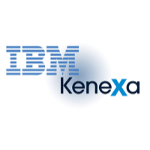
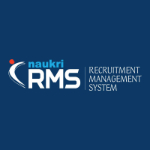

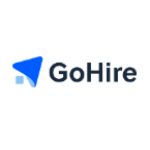
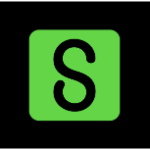
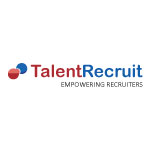
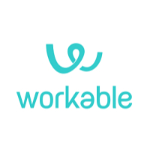
.png)
